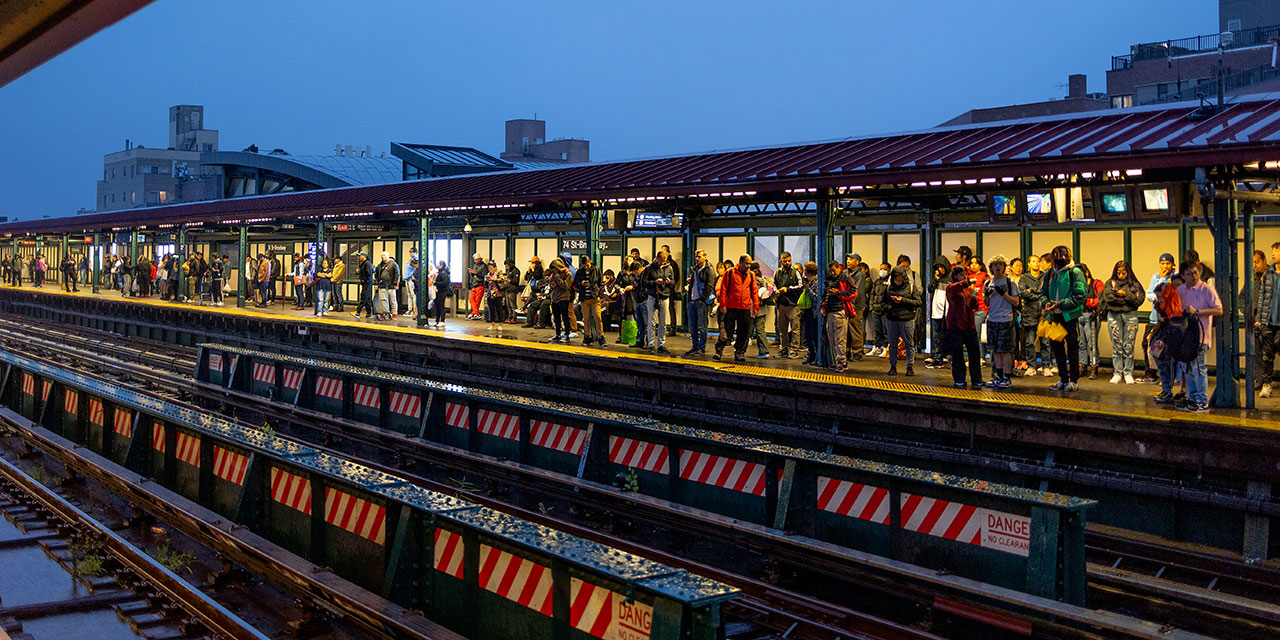
Earlier last month, the New York State Legislature passed a measure requiring the Metropolitan Transportation Authority (MTA) to staff all subway trains with two personnel: a train operator and a conductor, who separately controls the doors and makes announcements. The legislation, awaiting Governor Kathy Hochul’s signature, would effectively prohibit one-person train operation within the New York City subway system. If enacted, it would benefit the city’s powerful transit-worker unions, while undermining the MTA’s efforts to boost efficiency in the face of significant budget shortfalls and cost overruns.
This measure would worsen the MTA’s already extraordinarily high operating costs. The agency is aiming to reduce its more than $11 billion per year in labor expenses to help close a $3 billion shortfall. In April, MTA chair Janno Lieber emphasized that the agency plans to “self-fund” through increased efficiency, clearly indicating that labor reforms are under consideration.
Finally, a reason to check your email.
Sign up for our free newsletter today.
Currently, the MTA utilizes one-person train operation on several lines, including the weekend G and M trains and some shuttle lines. Previously, the L and 7 trains were also equipped for one-person operation, but this experiment ended in 2005, following arbitration with Transport Workers Union Local 100 (TWU). By contrast, in other major transit cities such as London, Paris, and Tokyo, one-person train operation has been standard practice for years.
One-person train operation provides the MTA with significant operational flexibility. Conductors are often essential on longer trains or at crowded stations, where they serve as additional “eyes” monitoring safety issues such as doors closing on passengers. But federal safety data indicate that one-person systems in other cities are just as safe as, if not safer than, New York City’s system.
At stations with shorter trains, conductors are often unnecessary. Getting rid of them would allow the MTA to reduce redundant overtime staffing. But the proposed law banning one-person operation would prohibit trials on specific lines during quiet off-peak hours, preventing the MTA from even investigating this as a cost-saving measure.
One of the largest backers of the bill was the Transit Workers Union, which has historically fought against any further implementation of one-person train operation in contract negotiations. The union has cited various safety concerns with one-person operation—platform accidents, evacuating riders in emergency situations, and even as a front line of defense against terrorist attacks like the foiled 2015 plot to bomb the subway system.
These concerns are overstated. Subway conductors sit in booths that provide limited view, only briefly glance at the platform at each stop, and have limited training to act in an emergency before first responders arrive. Further, the MTA wouldn’t employ single-operator trains on every subway line—only on train lines and circumstances where it would make the most sense.
Further, as Connor Harris pointed out in City Journal, one-person train operation need not put any conductors out of a job. Some could be reassigned as platform controllers or roving customer-service agents who both assist passengers and monitor platforms. Others could be certified to operate additional trains. This would reduce the MTA’s overtime burden, which amounted to more than $725 million in 2023 alone.
Albany is tying the MTA’s hands out of deference to unions like TWU, which has spent heavily to lobby for this bill and donated considerable sums to the campaigns of Governor Hochul and other state Democrats. The powerful transit unions have repeatedly lobbied against one-person train operation not because they fear losing union jobs but because they want to keep the overtime gravy train running for their 3,552 subway conductors—even if it hurts the system’s viability. The MTA and TWU could have struck a deal to reassign the existing conductor jobs with a bump in pay—just as TWU did in exchange for agreeing to past expansions of one-person train operation pilot programs.
If Governor Hochul signs this bill into law, it would demonstrate that Albany is less interested in MTA’s efficiency than in rewarding unions. Everyday New Yorkers will pay the price.
Photo by Andrew Lichtenstein/Corbis via Getty Images
City Journal is a publication of the Manhattan Institute for Policy Research (MI), a leading free-market think tank. Are you interested in supporting the magazine? As a 501(c)(3) nonprofit, donations in support of MI and City Journal are fully tax-deductible as provided by law (EIN #13-2912529).
Source link
















